The Austrian Grand Prix is a Formula One motor racing event sanctioned by the Fédération Internationale de l'Automobile. It has been held intermittently throughout its history, with races taking place in 1964, 1970–1987, 1997–2003, and then returning to the Formula One calendar in 2014.
1963: Non-Championship Austrian Grand Prix
A non-championship Austrian Grand Prix was held at the Zeltweg Airfield and won by Australian driver Jack Brabham.
1964: First Austrian Grand Prix Championship Event
The first Austrian Grand Prix championship event was held in 1964 and was won by Italian Lorenzo Bandini.
1965: Zeltweg 200 Miles
A non-championship sports car race, the Zeltweg 200 Miles, was held.
1966: 1000 km Zeltweg
The 1000 km Zeltweg, part of the World Sportscar Championship, was held.
1967: Cosworth Engine Funding
Cosworth engines were funded by Ford, with the exception of 1967.
1969: Austrian Grand Prix Moves to Spielberg
The Austrian Grand Prix moved to a permanent track in Spielberg, the Österreichring.
1970: Austrian Grand Prix at the Österreichring
The Austrian Grand Prix was held at the Österreichring from 1970 to 1987. The track was built in the Styrian mountains and known for its fast, flowing corners.
1971: Jackie Stewart's Second Championship
British driver Jackie Stewart won his second Drivers' Championship at the 1971 Austrian Grand Prix.
1975: Austrian Grand Prix as the European Grand Prix
The 1975 Austrian Grand Prix was designated the European Grand Prix, an honorary title given to one European race annually. It was marred by the fatal accident of American driver Mark Donohue.
1976: John Watson's First Formula One Victory
British driver John Watson, driving for Penske, won his first Formula One race at the 1976 Austrian Grand Prix. This was also Penske's only victory in Formula One.
1977: Introduction of the Hella-Licht Chicane
A slow three-corner chicane, later known as the Hella-Licht Chicane, was installed at the Voest-Hugel corner, significantly slowing down what was once the fastest corner on the track.
1978: Ronnie Peterson Wins
Swedish driver Ronnie Peterson won the 1978 Austrian Grand Prix after his teammate, Mario Andretti, crashed out.
1979: Rise of Turbocharged Engines
The 1979 Austrian Grand Prix marked the beginning of the dominance of turbocharged engines on the fast, high-altitude circuit.
1981: Jacques Laffite's Victory
French driver Jacques Laffite won the 1981 Austrian Grand Prix, which saw a close battle for third place involving five drivers.
1982: Elio de Angelis's First Victory
Italian driver Elio de Angelis won his first Formula One race in a thrilling 1982 Austrian Grand Prix, holding off Finnish driver Keke Rosberg in the final lap.
1984: Niki Lauda's Home Victory
Austrian driver Niki Lauda finally won his home Grand Prix in 1984, driving for McLaren.
1985: Andrea de Cesaris's Crash
Italian driver Andrea de Cesaris experienced a dramatic crash at the Panorama Curve during the 1985 Austrian Grand Prix, leading to his dismissal from the Ligier team.
1986: Alain Prost Wins
French driver Alain Prost won the 1986 Austrian Grand Prix after Austrian driver Gerhard Berger, who had been leading, suffered electrical problems.
1987: Last Austrian Grand Prix at the Österreichring
The 1987 Austrian Grand Prix was held at the Österreichring and was won by Nigel Mansell. This was the last time the Österreichring hosted the Austrian Grand Prix for several years due to safety concerns.
1987: Safety Concerns and the End of an Era
The 1987 Austrian Grand Prix was marred by two restarts due to accidents on the narrow pit straight. Safety concerns regarding the track's high speed, lack of runoff areas, and confined pit lane led to its removal from the Formula One calendar.
1995: Österreichring Refurbishment Begins
The Österreichring began undergoing refurbishments to modernize the track and improve safety, paving the way for the return of the Austrian Grand Prix.
1996: Österreichring Refurbishment Completed
The refurbishment of the Österreichring, which included a redesign by Hermann Tilke, was completed.
1997: Austrian Grand Prix Returns After Renovations
The Austrian Grand Prix returned in 1997 after renovations to the Österreichring, which was renamed the A1-Ring.
1998: Ilmor Engine Collaboration Begins
Ilmor began building engines funded by Mercedes.
2001: Ilmor Engine Collaboration Ends
This year marked the end of the collaboration between Ilmor and Mercedes for engine building.
2002: Ferrari Team Orders Controversy
The 2002 Austrian Grand Prix sparked controversy when Ferrari instructed Brazilian driver Rubens Barrichello to give up his lead and allow teammate Michael Schumacher to win the race.
2003: Final Austrian Grand Prix at the A1-Ring
The 2003 Austrian Grand Prix was the last one held at the A1-Ring before a hiatus.
July 2013: Agreement Reached to Revive the Austrian Grand Prix
Red Bull GmbH, the new owners of the circuit, reached an agreement with Bernie Ecclestone to bring back the Austrian Grand Prix.
2014: Austrian Grand Prix Returns to the Formula One Calendar
After a ten-year absence, the Austrian Grand Prix returned to the Formula One calendar in July 2014.
Mentioned in this timeline
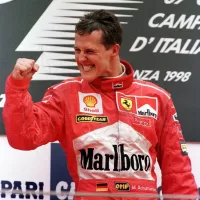
Michael Schumacher is a retired German Formula One racing driver...
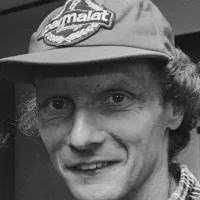
Niki Lauda was an Austrian Formula One driver and aviation...

A car also known as an automobile is a wheeled...
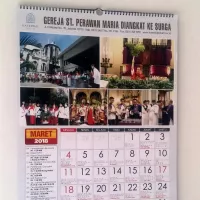
Calendars are systems for organizing days by naming time periods...
Trending
8 months ago Maldives bans Israelis in solidarity with Palestinians amid Gaza conflict escalation.

3 months ago Brock Bowers' Injury Concerns: Raiders' Crosby Also Added to Injury Report

2 months ago Edison Upgrades South Pasadena Electrical Grid Amidst Storm Recovery, Lifting Evacuation Orders
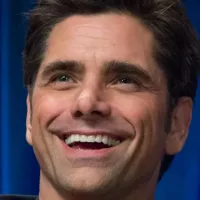
John Stamos is an American actor and musician who rose to fame as Blackie Parrish on General Hospital earning a...
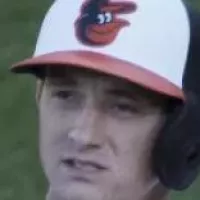
8 months ago Austin Hays emerges as a top Fantasy Baseball Waiver Wire pickup.

1 month ago Maxxine Dupri, assisted by AJ Lee, dethrones Becky Lynch for Intercontinental Title on Raw!
Popular

Tucker Carlson is an American conservative political commentator known for...

XXXTentacion born Jahseh Dwayne Ricardo Onfroy was a controversial yet...

Ben Shapiro is a prominent American conservative political commentator media...

Candace Owens is an American conservative political commentator and author...

William Franklin Graham III commonly known as Franklin Graham is...

Ursula Gertrud von der Leyen is a prominent German politician...